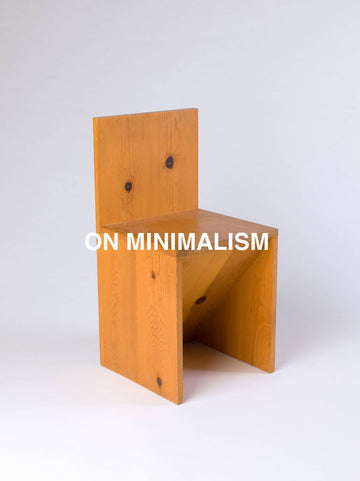Minimalism, a design philosophy that champions the adage "less is more," has profoundly influenced architecture, interiors, and furniture design across the globe. This movement, characterized by simplicity, functionality, and a focus on essential elements, has evolved uniquely in different cultures, each adding its own nuanced interpretation.
The Scandinavian movement, perhaps the most widely recognized iteration of minimalism, emerged in the mid-20th century. It emphasizes clean lines, natural materials, and a harmonious blend of form and function. Scandinavian design is not just about aesthetic minimalism; it embodies a lifestyle that values simplicity, sustainability, and connection to nature.
In France, designers like Pierre Chapo, Jean Prouvé, and Charlotte Perriand brought a distinctive flair to minimalism. Their work often combined industrial materials with organic forms, creating pieces that were at once austere and sensual. Chapo's solid wood furniture, Prouvé's prefabricated housing and furniture, and Perriand's innovative use of tubular steel all exemplify the French approach to minimalist design - one that never sacrifices elegance for simplicity.
Across the Atlantic, American modernism took root, with figures like Donald Judd leading the charge. Judd's furniture designs, much like his art, explored the purity of form and material. His pieces, often made from industrial materials like plywood and steel, challenged the boundary between art and functional object. This American interpretation of minimalism tended towards a more rigorous, almost scientific approach to reduction and essentiality.
In the Netherlands, a sober interpretation of minimalism emerged. Designers like Gerrit Rietveld and Dom Hans van der Laan crafted a visual language of stark simplicity. Rietveld's iconic Red and Blue Chair, with its planar elements and primary colors, became a symbol of De Stijl movement's minimalist ethos. Van der Laan, a Benedictine monk and architect, developed a theory of architectural order based on fundamental human perception, resulting in designs of breathtaking austerity and calm.
Belgium has also made significant contributions to minimalist design. Figures like Vincent Van Duysen, Jules Wabbes, and Nicolas Schuybroek have cultivated a distinctly Belgian approach. Their work often features a restrained palette, rich textures, and a deep respect for materials. Van Duysen's architecture and interiors, Wabbes' elegant office furniture, and Schuybroek's serene spaces all embody a minimalism that is at once rigorous and deeply comfortable.
No discussion of minimalism would be complete without mentioning Swiss-French architect Le Corbusier and his cousin Pierre Jeanneret. Their work in Chandigarh, India, produced a unique corpus of furniture that married modernist principles with local craftsmanship. The resulting pieces - from the iconic V-leg chair to the robust Kangaroo chair - showcase a minimalism that is both universal and deeply rooted in place.
These varied interpretations of minimalism - from Scandinavia to America, from the Netherlands to Belgium, from Switzerland to India - demonstrate the versatility and enduring appeal of this design philosophy. Each culture has adapted minimalist principles to its own context, creating a rich tapestry of design that continues to influence and inspire.
In our current era of excess and overstimulation, the allure of minimalism persists. It offers not just an aesthetic, but a way of living - one that encourages us to focus on what truly matters, to find beauty in simplicity, and to create spaces that foster calm and clarity. As we navigate an increasingly complex world, the wisdom of "less is more" resonates more profoundly than ever.

